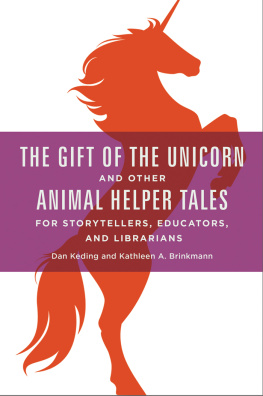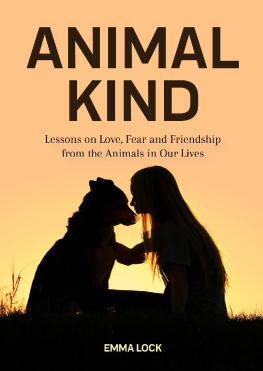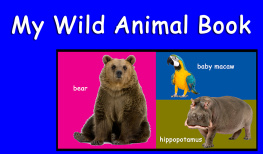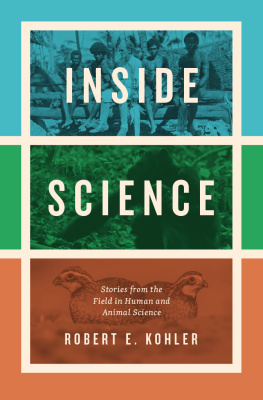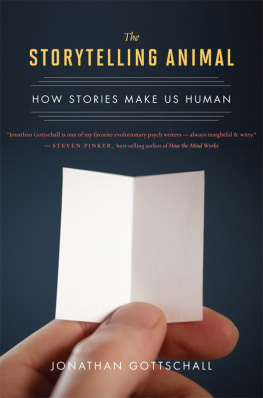The Gift of the Unicorn and Other Animal Helper Tales for Storytellers, Educators, and Librarians

Dan Keding and Kathleen A. Brinkmann

Copyright 2016 by Dan Keding and Kathleen A. Brinkmann
All rights reserved. No part of this publication may be reproduced, stored in a retrieval system, or transmitted, in any form or by any means, electronic, mechanical, photocopying, recording, or otherwise, except for the inclusion of brief quotations in a review, without prior permission in writing from the publisher.
Library of Congress Cataloging-in-Publication Data
Names: Keding, Dan, author. | Brinkmann, Kathleen A., author.
Title: The gift of the unicorn and other animal helper tales for storytellers, educators, and librarians / Dan Keding and Kathleen A. Brinkmann.
Description: Santa Barbara, CA : Libraries Unlimited, [2016] | Includes bibliographical references and index.
Identifiers: LCCN 2016002978 (print) | LCCN 2016020869 (ebook) | ISBN 9781440840524 (pbk. : acid-free paper) | ISBN 9781440840531 (ebook)
Subjects: LCSH: AnimalsFolklore. | Human-animal relationshipsFolklore.
Classification: LCC GR705 .K38 2016 (print) | LCC GR705 (ebook) | DDC 398.24/5dc23
LC record available at https://lccn.loc.gov/2016002978
ISBN: 9781440840524
EISBN: 9781440840531
20 19 18 17 161 2 3 4 5
This book is also available as an eBook.
Libraries Unlimited
An Imprint of ABC-CLIO, LLC
ABC-CLIO, LLC
130 Cremona Drive, P.O. Box 1911
Santa Barbara, California 93116-1911
www.abc-clio.com
This book is printed on acid-free paper 
Manufactured in the United States of America
Illustrations created by Lisa Brinkmann Zangerl.
As always, to Tandy and our critters Traveler, Dido, Jack, Maeve, and Mac
DK
To Lisa, Daniel, and Art, with love
KB
Contents
Acknowledgments
I wish to thank Lisa Brinkmann Zangerl for her time and effort in creating the lovely line drawings for the chapters in this book. She patiently listened to my ideas about the art work and made it a reality. Maeve Reilly proofread many of the stories, helping me to improve them. I am indebted to Tandy Lacy, who gave a more thorough edit to the stories. Her background in folktales and in world cultures was invaluable. I thank Betsy Hearne for her insights into the Tibetan tale, The Young Man Who Refused to Kill. For his support and patience during this project, I wish to acknowledge my son, Daniel. He was always willing to listen to a story and comment or offer suggestions for teacher questions. Lastly, I am grateful to Dan Keding for inviting me to coauthor this work. He has been an excellent storytelling mentor and continues to be a treasured friend.KB
I wish to thank my wife, Tandy Lacy, for listening, reading, commenting, editing, and indexing the stories; Lisa Brinkmann Zangerl for her wonderful drawings that enhanced our stories and gave them life; Kath Brinkmann who found such wonderful stories and was so patient with my strange waysshe is a wonderful friend and collaboratorand Barbara Ittner who guided and shepherded us with kindness and knowledge.DK
Introduction
T he world of folktales and fairy tales is populated with some of the most memorable characters in all of literature. Among these, many fascinating and fantastic animals stand out. From Pegasus riding through the skies of ancient Greece to Puss in Boots helping a young man on his adventure to General Dog and his army of fellow beasts saving the day for their beloved master, animals have been portrayed as the guardians and helpers of countless men and women on their heroic journeys.
Often the tales of these animal comradesthrough their wiles, wisdom, and courageshed a unique light on the human experience. We see ourselves idealized in the way these beasts guide, aid, and deal with their human charges. Through the guiding paws, claws, and talons of these animals, we understand the proper way to communicate and interact with each other. Their stories are guideposts for our own behavior. Here we find the compassion, loyalty, and wisdom that humans often lack but our animal guides possess in abundance. In this way we are challenged by the animals in these stories to build those qualities in our own lives.
Folktales may be one of the oldest methods of passing down wisdom. There are cautionary tales, wonder tales, historical stories, and pourquoi (how and why) tales, to name a few. These stories not only entertain but can inspire deeper reflection and encourage us to explore the world.
The activities in this book are written for learners in grades three through six, designed to enrich the social studies and language arts curriculum as well as programs focused on the environment and appreciation of world cultures. Librarians, storytellers, folktale scholars, and teachers will find these stories and the supporting notes and resources invaluable.
The fascination many children have for wild animals often includes an element of fear. This powerful emotion, without guidance and education, can lead to misunderstanding and even disrespect. These tales feature animals that assist the main character in challenging situations and sometimes save a persons life by sacrificing their own, as in the story from Korea called The Pheasants and the Bell. The compassionate actions of the animal characters provide a model for behavior and encourage character traits such as respect, generosity, courage, empathy, integrity, and kindness. Teachers may use these stories as a starting point for discussions about human behavior, why some people behave as they do, and why society values certain virtues.
In the classroom, these tales, each with its country of origin identified, can be used to stimulate discussions about cultural diversity. For example, in Asia, dragons are viewed as benevolenta fact that is clearly illustrated in the story The Dragons of Ha Long Bay, where these mythical creatures save the Vietnamese boat villagers from the invading Chinese. Studies in biology can be enhanced by stories such as Yogodayu and the Army of Bees. This tale from Japan can lead into a lesson on how bees benefit humans by pollinating our food crops.
Discussion questions, activities, and additional notes to aid educators are found in the Questions and Activities Section. Readers will appreciate the notes at the end of each story as well as the Story Sources, which include the tale type and references. A separate bibliography offers further reading options. A quick reference table connects the story with the animal type along with the country from which the story originated.
We hope that you will enjoy these stories that span the globe yet hold common themes. Kindness is repaid with kindness: you get what you give.
Section 1
Creatures of the Land
The Grateful Wolf
A folktale from Japan
T here is an old story told of a Japanese merchant named Daisuke, who lived with his wife in a small village. One day Daisuke prepared for a business trip to a village on the other side of the mountain. Handing him food for his journey, his wife told him not to worry about their shop. She would tend it.

